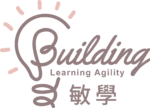This diagram was inspired by the blog post, The agile learner in a VUCA world, written by @alohalavina. VUCA is an acronym used to describe volatility, uncertainty, complexity, and ambiguity. Put simply, we live in a fast-changing world and in such unfamiliar environment, we face unpredictable changes, often are required to make decisions in complex systems, and to take uncertain actions that are outside of our expertise. We need to rethink education and build students’ capacity for the VUCA world.
Developing approaches to learning skills becomes more important than ever through the schooling process. Learners must equipped with skills and strategies that allow them to be thinkers, communicators, risk-takers, inquirers, reflective, caring, open-minded, balanced, principled and knowledgable. If we can
truly follow the framework of the IB curriculums and develop a continuum, I am hopeful that we can develop students who strive for understanding, nurture passion in self and others, as well as take actions ethically.
Having this big picture in mind, we help students to develop these skill and stretch their learnability. One way to do this is to align the objective (learning target), skill indicator, and strategy. Most importantly, we also need to take an evidence-based approach to monitor their progress and provide cognitive coaching conversation. The process of practicing and developing skills must be deliberate in order for students reach mastery.
Here are some strategies that can help to build the skills. The skill indicators are merely suggestions by the IB. Schools are not required to cover them all. Instead, I think the important point is for schools to consider their own contexts, reflect on their school missions and develop own continuum of approaches to learning skills that can prepare students for the future.
Strategies must be used with intentionally and practice deliberately. This document is named “ATL Smörgåsbord“. Just like you are going to a buffet, there is a wide variety of food, and you will take only what you need.
If you would like to contribute to the ATL Smörgåsbord, please use the Google Form to complete the process.
学习灵敏度 Learning agility
This work is licensed under a Creative Commons Attribution-NonCommercial 4.0 International License. In short, you can copy, distribute and transmit the work, but you must attribute the work. This work is not for commercial purposes.




Thanks alot Alison, that’s very useful.
Lamis
hello Alison
Could you please share an ATL skill task in Language Acquisition because I feel lost a little.
Thanks in advance.
Hi Lamis,
The aims and objectives of the subject (language acquisition in this case) can point us to the right direction concerning identifying target ATL skills to teach.
For example, if we examine Phase 4 objective A strand: construct meaning and draw conclusions from information, main ideas and supporting details, we first define what “construct meaning” means. The definition provided in the language acquisition guide is “create an understanding about something; infer and interpret facts, an opinion, an idea or an event that has been read, reviewed, listened to.” (page 102)
To support students develop mastery of this strand, I would want them to make inferences and draw conclusions. One strategy in developing this could be “ACE” (Answer the question, Cite evidence, and Extend; explain their answer). You can check ACE strategy here: http://bit.ly/2Pg5x8u
Hope this helps.
Alison
Hi Alison,
Firstly thank you for responding. Secondly what about low phases like 1 and 2. How can I assess student’s ATL skills if he/she are still learning the basis ?
Thank you
Lamis
Hi Lamis,
Students might not be proficient in the target language yet, but it doesn’t mean they can’t learn any skill. In fact, they particularly need to be equipped with skills in order to acquire the target language. Phase 1 students in MYP year 1 and MYP year 5 are very different with their cognitive abilities and this is something we should consider when identifying approaches to learning skills to support them in acquiring the second language.
Here are some examples to teach Phase 1 and 7 students ATL skills:
If the objective for Phase 1 students is to communicate with a sense of audience and to use language to suit the context, a simple strategy that I use to teach this is called RAFT (Role, Audience, Format and Audience).
If my goal is to help students listen for main ideas and identify supporting details, I can do a gap information activity and prior to the activity, I will teach them how to clarify questions and forming questions explicitly. (Providing sentence stems in the target language always help.)
For Phase 1 and 2 students, if we want them to identify main message after viewing or listening the text, we can teach them using the visible thinking routine “headline” explicitly to generate a response.
Best,
Alison
Hi Alison
I find your post very informative. Thanks!